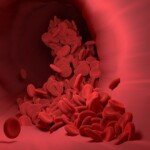The Spark of Tomorrow: CNC EDM Technology’s Cutting-edge Advances Reshape Accuracy Manufacturing
The world of precision machining continues to push boundaries, requiring increasingly complex geometries, stronger materials and stricter tolerances. Standing at the forefront of this revolution, CNC Electrical Processing (EDM) Has undergone amazing evolution. No longer just a niche solution for tools and models, modern CNC EDM is a sophisticated, highly automated platform that spans innovation across the aerospace, medical, energy and automotive industries. At Greatlight, we use these cutting-edge advancements every day to solve our customers’ most challenging metal parts manufacturing problems. Let’s dive into the key technological leaps today to redefine CNC EDM.
From manual tips to digital advantages:
The fundamental principles of EDM – using controlled electric sparks to erode the conductive material without physical contact – remains the same. However, the intelligence that controls these sparks undergoes quantum transfer. Advanced CNC system The digital brain power of precision is:
-
Smarter generators: Gone are the days of simple on/off. Modern generator utilization Adaptive control logic. They continuously monitor and adjust voltage, current, pulse duration and pause time hundreds of thousands of times per second. Real-time optimization has produced significant benefits:
- Fundamentally improves cutting speed: Due to intelligent pulse modulation and gap control, material removal rates, especially in deep cavity or complex shapes, have been greatly improved.
- Unprecedented finish control: Adaptively initiates minimized surface recast layers and microcracks, thus creating mirror-like finishes directly on the dielectric device surface and in many cases minimize secondary polishing.
- Reinforced electrode wear compensation: Complex software can predict and actively compensate for electrode wear during machining paths, ensuring dimensional accuracy throughout the operation, even with complex electrodes.
-
Unparalleled accuracy and accuracy (submicron level): Integration with ultra-precise linear scales, thermal compensation systems and vibration damper structures enables modern CNC EDM machines to achieve submicron geometric tolerance and surface finishes at all times below 0.1 µm RA. This accuracy is critical to components such as fuel injector nozzles, surgical implants and semiconductor tools.
-
Advanced detection and automated detection systems directly integrated into the EDM machine environment allow:
- Automatic working settings: Position the workpiece accurately, define the benchmarks and eliminate tedious manual alignment.
- Measurement and compensation in the process: Verify the dimension intermediate processing and automatically adjust the tool path to compensate for any deviations to ensure the right front result.
- Seamless electrode calibration: Accurately measure electrode size and wear, triggering the automatic wear compensation setting.
- Combined with robot parts processing and pallet chain change, this can be enabled Light-emitting manufacturing – Run complex EDM operations unattended, significantly improving productivity.
-
5-axis function integration: Synergies between 5-axis CNC machining EDM is revolutionary. While Greatlight performs well in both, a technical marriage unlocks new possibilities:
- Complex geometry makes it possible to: The tilted electrode or workpiece is eliminated "Vision" The limitations of traditional EDM. This allows for undercuts, deep cavity with draft angles, complex turbine blades, and complex internal features in a single setup – using conventional 3-axis EDM alone.
- Best Electrode Method: The 5-axis movement enables the electrode to always tangentially towards the working surface, which can improve flushing efficiency and consistency of the surface finish even on the contoured surface.
- Reduce electrode complexity: Generally, multiple complex electrodes can be replaced with a single, simple electrode strategically manipulated by 5 axes, thereby reducing electrode manufacturing time and cost.
-
Improved flushing technology: Effective debris removal is essential for stable processing and good finishing. Progress includes:
- Intelligent flush control: Programmable pressure flushing is synchronized with processing cycles and electrode motion.
- Jet flush: Accurate, high pressure jets targeting deep or challenging geometric shapes.
- Flooding Processing Innovation: Advanced dielectric filtering and cycling systems maintaining dielectric purity is critical for micron-scale accuracy, especially during immersion.
-
Multitasking and hybrid concepts: The driving force of efficiency leads to:
- EDM & Milling on a single platform: Machines combining EDM and high-speed milling can perform rough operations through milling and through EDM on the same setup and complex details.
- Enhanced Wire EDM (WEDM): Similarly, Wedm has seen advancements such as multi-line systems and independent 4-axis control of the cone machine, thus greatly improving the productivity of complex 2D and complex 3D profiles.
- Seamless CAD/CAM integration and simulation: Modern CAM software specifically targets EDM provides powerful simulation tools. Users can gradually visualize the entire machining process, including electrode movement, spark areas and expected material removal. This not only prevents expensive collisions and programming errors, but also optimizes electrode strategies and machining times.
- IoT and data analysis: Leading EDM machines now have extensive connectivity. Sensor monitors key parameters (vibration, temperature, dielectric state, power consumption). This data is derived from the implementation analysis platform:
- Predictive maintenance: Identify potential component failures before causing downtime.
- Process optimization: Analyze historical data to specific materials and geometry of fine-tuning parameters for improved efficiency and quality consistency.
- Remote monitoring and support: Technicians can remotely diagnose problems, ensuring maximum machine uptime.
Conclusion: Accurate cooperation
landscape CNC EDM technology It is one of the ruthless innovations. The advancements detailed here – smarter controls, enhanced precision, seamless automation, integration with 5-axis capabilities, and powerful data-driven insights – have transformed EDM from a professional process to a cornerstone of advanced manufacturing.
exist GreatWe are not only observers who observe this evolution; we actively invest in it. We’re Advanced five-axis CNC machining equipment And continue to develop Production technology Position us as unique. We focus on addressing the most stringent metal parts manufacturing challenges – processing complex geometries in steel, titanium, carbides and exotic alloys that will flood conventional methods. Our One-stop solution Combining EDM expertise and integration Post-processing and completion of servicesmake sure that your parts are not only processed, but are ready and ready.
Whether it is a prototype that requires unparalleled details or a complex production operation that requires micro-level consistency, Great use CNC EDM Provide results. We understand the value of speed without compromising accuracy, which is why we provide Quick customization Passed through Most materials.
Don’t compromise or delay projects. Harness the power of the latest EDM technology by committed to outstanding partners. Visit Greglight today Discuss your custom precision machining needs. We can now customize your high-precision parts Best price and turnaround timeSupported by unrivaled technical expertise.
FAQ: CNC EDM Technology
-
What are the main differences between pendant EDM and wire EDM?
- Settling EDM (RAM/DIE sinking EDM): Use a shaped electrode (copper, graphite) that falls into the workpiece to create a negative impression. Ideal for complex 3D cavity, molds, molds and complex internal features.
- Wire EDM: Use continuous feeding thin metal wire (brass, coated) as electrodes. It cuts into the workpiece with controlled sparks, resulting in complex 2D profiles and high-precision complex tapered shapes. Ideal for extrusion dies, punching tools and flat complex parts.
-
What material is CNC EDM machine?
- Any conductive material of an EDM machine, regardless of its hardness. This is its key advantage. Common materials include:
- Hardened steel, tool steel
- Stainless steel
- Titanium and Titanium Alloys
- Nickel-based superalloy (Inconel, Hastelloy)
- Carbide (tungsten carbide)
- Copper, aluminum (although faster methods exist)
- Exotic alloys (Kovar, molybdenum)
- Any conductive material of an EDM machine, regardless of its hardness. This is its key advantage. Common materials include:
-
Why choose EDM over traditional CNC milling?
- Hard Material: EDM stands out in the position of hardened (HRC 50+) materials that can damage the milling cutter.
- Details and sharp corners: Create complex features with sharp inner corners, which are difficult or impossible to rotate the tool to make details.
- No mechanical force: Eliminates cutting forces, prevents parts from deforming (ideally suitable for thin walls) and eliminates tremor.
- Top surface finish: Ability to achieve very thin surface completion directly from the machine.
- Complex geometric shapes: Especially when used in combination with 5 axes, it deals with worn dents and deep cavity.
-
How accurate is CNC EDM?
- Modern CNC EDM is very accurate. It can usually be 0.001 mm (1 micron) Or better surface treatment on complex features is less than 0.1μmRa. Due to the advanced control system, the consistency of multiple parts is also high.
-
What are the limitations of EDM?
- Material conductivity requirements: Only conductive materials can be processed.
- Slower than milling for soft materials: For soft metals such as aluminum, milled bulk materials are significantly faster to remove.
- Electrode wear/cost: Especially in settling plate EDM, electrode design and wear are key factors affecting time and cost.
- Potential surface layer: The spark process produces thin "Recast layer" (Heat-affected Zone – HAZ), may require post-processing (polishing) for critical fatigue applications, although advanced generators minimize it.
-
Can EDM eliminate the need for grinding or polishing?
- Typically, yes, especially in the case of fine finishes (<0.2 μmRA). Advanced EDM technology provides superior finish control compared to milling In terms of accuracy and complexity. However, depending on application requirements, the ultra-smooth mirror finish may still require a final polish, but the startup quality is much higher.
-
What role does dielectric fluid play?
- Dielectric fluids (usually oil or deionized water) are essential. it:
- Isolate the gap between the electrode and the workpiece until the fault voltage is reached.
- Flush away eroded metal particles (debris) to prevent short circuits and ensure stable processing.
- Cool the electrodes and workpieces.
- Controls the characteristics and size of the spark.
- Dielectric fluids (usually oil or deionized water) are essential. it:
- Why are companies like Greatlight important for advanced EDM?
- Investing in the latest EDM technology and effectively integrating IT (especially using 5-axis machining capabilities) requires substantial capital expenditure and deep expertise. Work with experts Great supply:
- State-of-the-art equipment: No large investment.
- Expert Application Engineer: Who understands the nuances of material and process parameters to optimize results and costs.
- End-to-end solution: Combine EDM with milling, rotation and finishing services.
- Scalability and speed: Utilize its capabilities and expertise to quickly prototyping and production runs.
- Investing in the latest EDM technology and effectively integrating IT (especially using 5-axis machining capabilities) requires substantial capital expenditure and deep expertise. Work with experts Great supply:

















